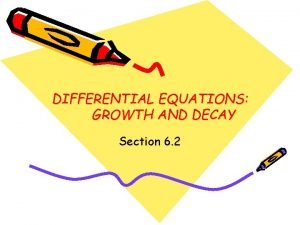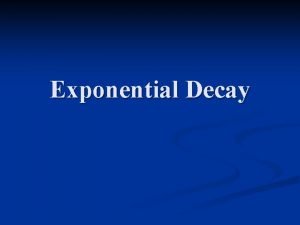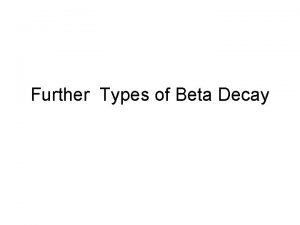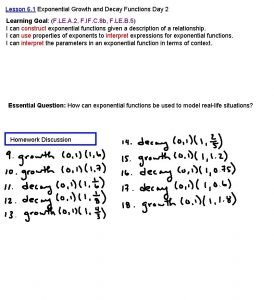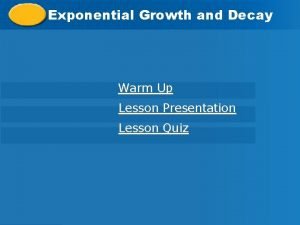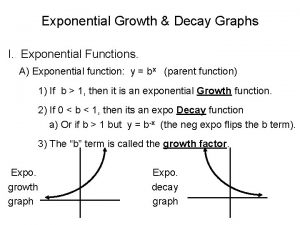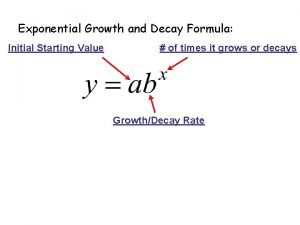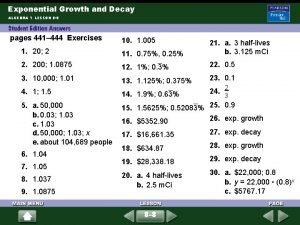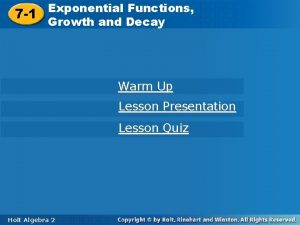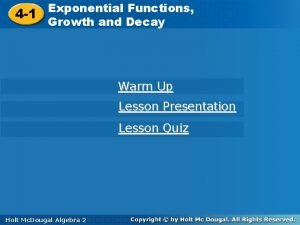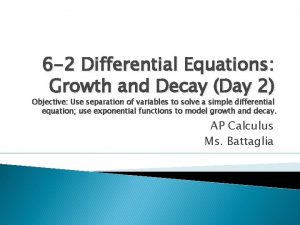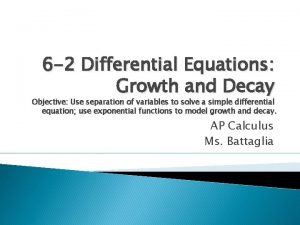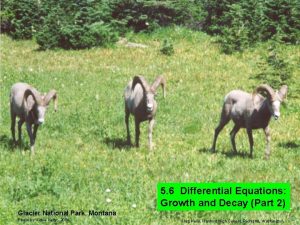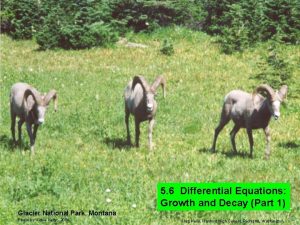DIFFERENTIAL EQUATIONS GROWTH AND DECAY Section 6 2









- Slides: 9

DIFFERENTIAL EQUATIONS: GROWTH AND DECAY Section 6. 2

When you are done with your homework, you will be able to… • Use separation of variables to solve a simple differential equation • Use exponential functions to model growth and decay in applied calculus

SEPARATION OF VARIABLES The strategy is to rewrite the equation so that each variable occurs on only one side of the equation.

The way to separate the variables for A. True B. False is

THEOREM: EXPONENTIAL GROWTH AND DECAY MODEL • If y is a differentiable function of t such that y’ = ky and t > 0, for some constant k, then • C is the initial value of y, and k is the proportionality constant. • Exponential growth occurs when k > 0, and exponential decay occurs when k < 0.

Using an Exponential Growth Model • Carbon Dating. Carbon-14 dating assumes that the carbon dioxide on Earth today has the same radioactive content as it did centuries ago. If this is true, the amount of absorbed by a tree that grew several centuries ago should be the same as the amount of absorbed by a tree growing today. A piece of ancient charcoal contains only 15% as much of the radioactive carbon as a piece of modern charcoal. How long ago was the tree burned to make the ancient charcoal? The half-life of is 5715 years.

To solve this problem, I must find t first. A. True B. False

To find the rate of decay, I should set up the problem as follows: A. B.

The final answer to the nearest ten years is 15640. 0
 Growth and decay differential equations
Growth and decay differential equations Exponential decay factor
Exponential decay factor Beta minus decay vs beta plus decay
Beta minus decay vs beta plus decay Lesson 6 exponential growth
Lesson 6 exponential growth What is the difference between growth and decay
What is the difference between growth and decay How to know if its exponential growth or decay
How to know if its exponential growth or decay Exponential growth equation example
Exponential growth equation example Practice 8-1 exploring exponential models answers
Practice 8-1 exploring exponential models answers 7-1 exponential functions growth and decay
7-1 exponential functions growth and decay 4-1 exponential functions growth and decay
4-1 exponential functions growth and decay
